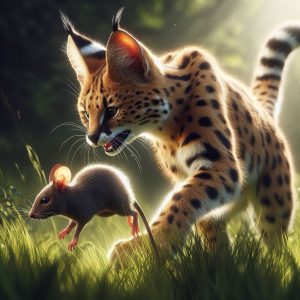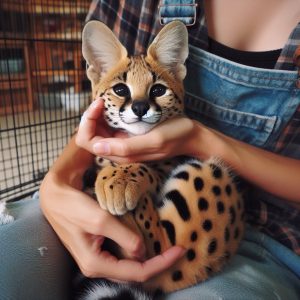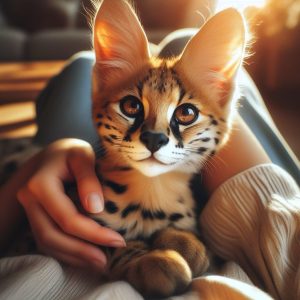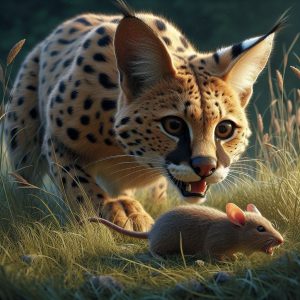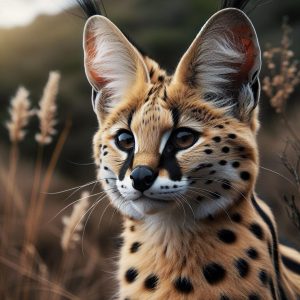Exploring the Pros and Cons of Serval Ownership: Is a Serval the Right Pet for You?
Owning a serval—a majestic and exotic wild cat—can be an enticing prospect for animal lovers seeking a unique and unconventional companion. However, the decision to bring a serval into your home should not be taken lightly, as it comes with both benefits and challenges. In this article, we’ll explore the pros and cons of owning a serval as a pet to help you make an informed decision about whether a serval is the right fit for your lifestyle and circumstances.
Pros of Owning a Serval:
- Exotic Appeal: With their striking coat patterns, long legs, and large ears, servals exude an air of elegance and mystery that sets them apart from traditional domestic cat breeds. Owning a serval allows you to experience the beauty and majesty of a wild creature up close in the comfort of your own home.
- Intelligent and Playful: Servals are highly intelligent and playful animals, capable of forming deep bonds with their human companions. They enjoy interactive play sessions, puzzle toys, and mental stimulation, making them engaging and entertaining pets to have around.
- Loyal Companionship: Despite their wild ancestry, servals can be affectionate and loyal companions, forming strong bonds with their owners. They often enjoy cuddling, purring, and spending time with their human family members, providing comfort and companionship in return.
- Conversation Starter: Owning a serval is sure to spark curiosity and interest from friends, family, and visitors. Their exotic appearance and unique behaviors make them a fascinating topic of conversation and a source of admiration and intrigue.
Cons of Owning a Serval:
- High Energy Levels: Servals are energetic and active animals that require plenty of space and opportunities for exercise and enrichment. Meeting their physical and mental needs can be challenging, especially in a residential setting, and may require dedicated time, effort, and resources.
- Specialized Diet: Servals have specific dietary requirements that differ from traditional domestic cats. They are obligate carnivores and require a diet rich in meat, including whole prey items such as mice, chicks, and rabbits. Providing a balanced and nutritionally complete diet for a serval can be expensive and time-consuming.
- Wild Instincts: Despite their domestication, servals retain many of their wild instincts, including hunting and territorial behaviors. They may exhibit stalking, pouncing, and prey-catching behaviors, which can pose challenges in a home environment and may lead to conflicts with other pets or safety concerns.
- Legal and Ethical Considerations: Owning a serval is subject to legal restrictions and regulations in many jurisdictions. Servals are classified as exotic or wild animals in most areas and may require permits, licenses, or special permissions to keep as pets. It’s essential to research and comply with local laws and regulations governing exotic pet ownership to avoid legal issues and ensure the welfare of the animal.
Conclusion:
In conclusion, owning a serval as a pet offers a unique and rewarding experience for those willing to dedicate the time, effort, and resources to meet their specialized needs. While servals can be affectionate, intelligent, and engaging companions, they also require careful consideration and responsible ownership to ensure their health, happiness, and well-being. Before bringing a serval into your home, weigh the pros and cons carefully and consider whether you have the resources and commitment necessary to provide a fulfilling life for this extraordinary wild cat.

